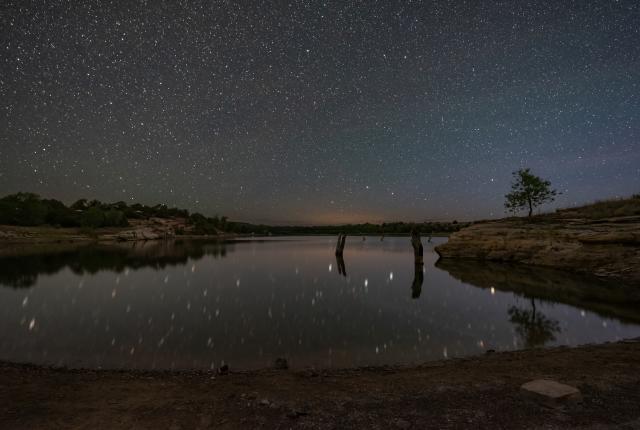THE REMOTE STATUS of some state parks means campers can observe an unpolluted and inspiring view of the night skies that has been largely unchanged for centuries, says Peter Lipscomb, former director of the Night Sky Program with the New Mexico Heritage Preservation Alliance. Star-curious adventurers often gather at parks with telescopes to take a closer look at nebulae, planets, and the star clusters linked in constellations. Missed the party? Lipscomb advises packing binoculars—useful by day for spotting wildlife and birds, and suitable at night for seeing the Pleiades constellation and the Andromeda galaxy—and a planisphere, or star chart, to get familiar with the night sky’s features (and find said constellation and galaxy). A planisphere packs flat and doesn’t require batteries or a cell signal, so it travels easily, works in remote campsites, and dials in a view of the current night sky when you adjust it according to the date and time. He also cautions to turn off handheld devices and white lights, switching to red lights to preserve night-adapted vision.
Clayton Lake State Park & Dinosaur Trackways
Clayton Lake State Park & Dinosaur Trackways, in northeastern New Mexico, was one of the first parks to install an observatory and remains the only state park in New Mexico to attain International Dark Sky Park gold-level status. Starlight travels for millions of years to reach us on Earth, Lipscomb adds. “We are looking back in time when we see that distant light. But we’re also connecting to an environment that existed when our grandparents and their grandparents were alive, and they looked up at the stars.”
Leasburg Dam State Park
The observatory at Leasburg Dam, just a half-hour drive from Las Cruces, opens once a month for “star shows.” The 16-inch telescope is strong enough to count some of the bands in Saturn’s rings, as well as star clusters and nebulas. Astronomical Society of Las Cruces volunteers (aslc-nm.org) also set up additional telescopes for viewing other “targets.” In summer months, the park hosts “Music and the Stars,” with a local musician playing for two hours before each star show.
Read More: Pack your camera—and a sleeping bag. Deming’s night skies are calling.
Cerrillos Hills State Park
Guides at Cerrillos Hills intermittently escort visitors on twilight hikes of the park to watch the sky darken around the views of the Jemez, Ortíz, Sandía, and Sangre de Cristo mountains rimming the skyline. Experiencing a park at different times of day builds a bigger picture of that place and its ecosystems, says Lipscomb, the park’s current director. Plus, twilight is when the desert comes to life. “We have more species that are active in the nighttime than the day—because it’s survival.” He also organizes “star parties” at Cerrillos Hills, the next of which is scheduled for September 23 and offers a guided tour of the night sky.


